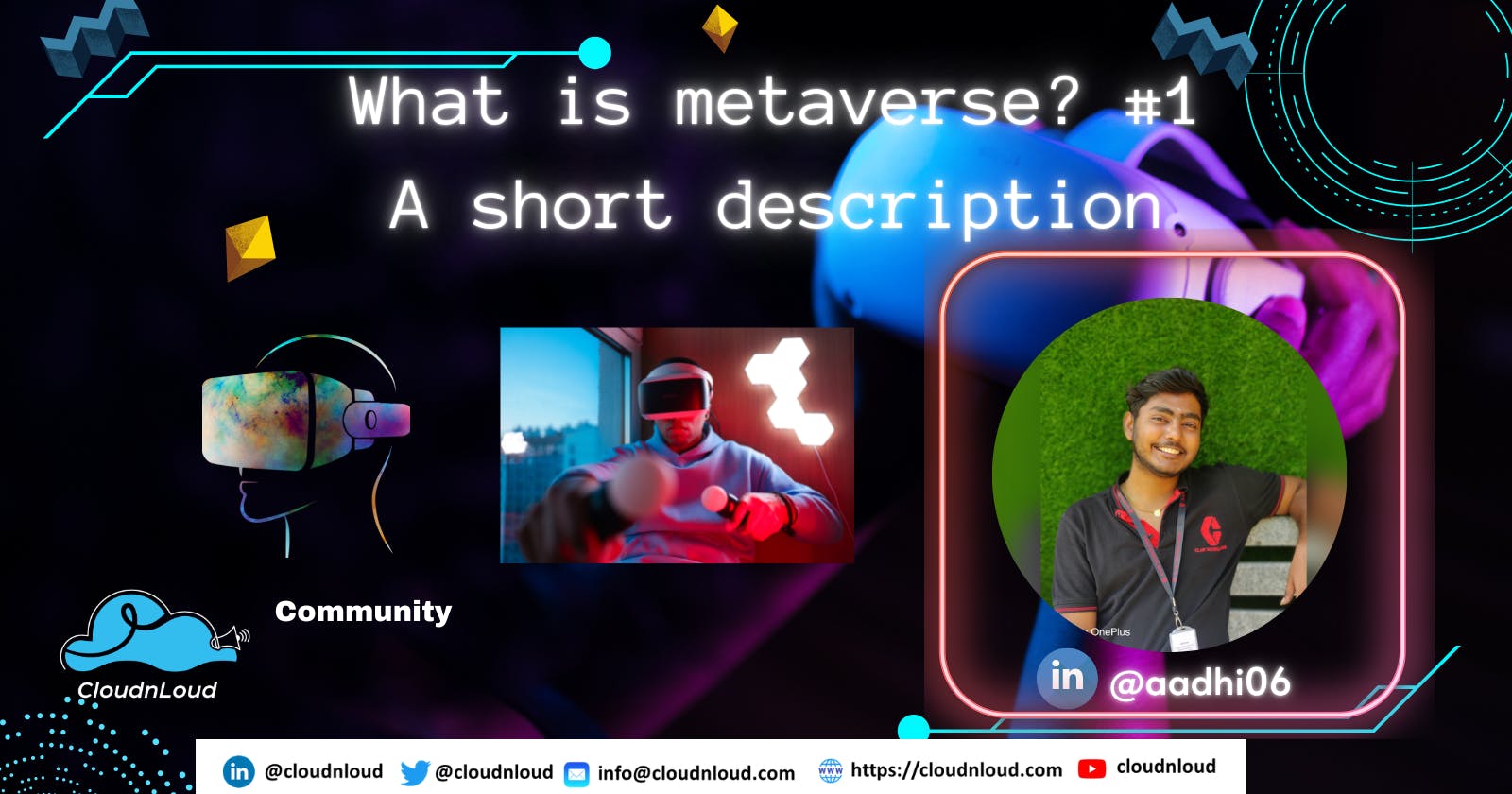Table of contents
What is metaverse?
The metaverse is a 3D online virtual realm that connects individuals in all parts of their lives. It would connect several platforms, similar to how the internet connects various websites that may be accessed with a single browser. Neal Stephenson's science-fiction novel Snow Crash introduced the notion. However, while the concept of a metaverse was formerly considered fiction, it now appears that it may become a reality in the future. Augmented reality will power the metaverse, with each user managing a character or avatar. For example, you might hold a mixed reality conference in your virtual workplace using an Oculus VR headset, conclude work and relax in a blockchain-based game, and then manage your crypto portfolio and finances all within the metaverse.
Some characteristics of the metaverse may already be seen in existing virtual video game environments. Workplace socializing tools such as Gather or games like Second Life. The town combines several aspects of our life into online environments. While not the metaverse, these applications are relatively close. The metaverse does not yet exist.
The metaverse will enable economics, digital identification, decentralized government, and other uses in addition to games and social media. Even today, user production and ownership of valuable goods and currencies contribute to the development of a unified metaverse. All of these characteristics give blockchain the ability to fuel this future technology.
Future of metaverse
As we rely more on our phones to travel about outside the house and to mix experiences and services (both real-world and virtual), the Metaverse notion might be the game changer. The inherent network strength and the ability to fully immerse oneself on a mobile device via the cloud will extend brand-new service and working possibilities, forcing us to reconsider the existing lack of distinction between home and job.
We will all hear the equivalent of rumbling thunder. As a result of 6G, the virtual and real worlds will clash. Work and home will always be linked, and we'll see a wide range of different groups moving about and interacting with one another across these two sides of the Metaverse on a continual and, ideally, seamless basis. In five separate ways, Covid-19 has spawned an entirely new way of thinking about the cosmos that better prepares us for the possible Metaverse world:
The Metaverse is becoming the new virtual infrastructure for how we work, thanks to the internet, the cloud, and mobility.
Some tasks will exclusively be conducted remotely in the next ten years as a result of the incredibly effective hybrid working environments. As a result, relocating for a new job will become less common. This gives the Metaverse notion a more tangible meaning. The decisions we make on a daily basis, such as whether or not to board an aircraft in order to succeed, or extrapolating our own home situation to how others should handle theirs, will be significantly different and will need greater compassion. We will need to take away metaphorical masks as we peel away physical and virtual layers to reveal our true selves. This relates to both how we manage our workers and how the distinction between home and work is blurred in both physical and virtual environments.
The device acts as our own knowledge repository. Only 15% to 20% of individuals today have fully ubiquitous connections, allowing them to utilize their cell phones as a personal information center. Because of Verizon's enormous spectrum holdings, 100% of the population will have access to the customized knowledge center by 2032. Though still in their infancy, concepts such as immersive learning on campus will be common by 2032, allowing students to exchange information and master complicated subject matter in near real-time due to edge networks. What we see today in an ASU biology professor will become a routine procedure. In 10 years, these philosophical notions should be generally acknowledged as supporting a brand-new metaverse experience for firms and employees. As we migrate to a really widespread 5G and 6G economy, we will see a radically different usage of technologies like 6G as well as the sorts of wireless edge-based services that companies subscribe to.
In my next blog, we will discuss in detail how to build metaverse application requirements to build a metaverse application and hardware requirements. In further blogs, I will explain step by step process and working in oculus quest 2, etc.
Community and Social Footprints :
Community

